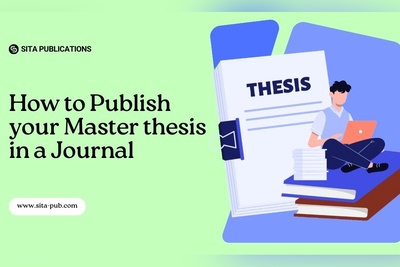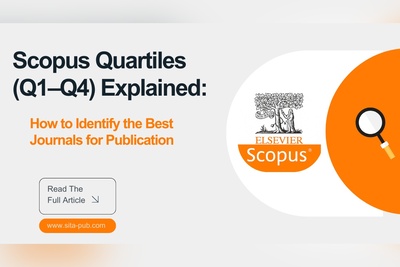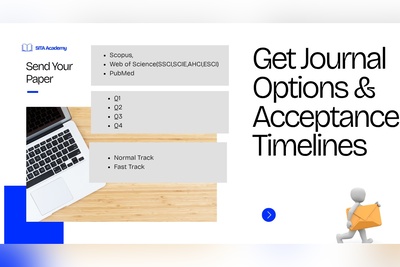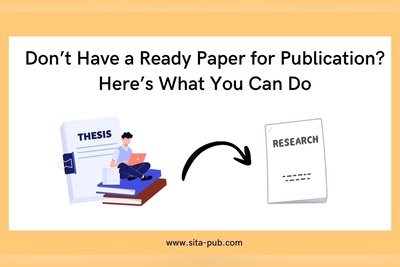From Submission to Acceptance: How Long Does SSCI Publication Really Take?
Publishing your Master’s or PhD research in an SSCI (Social Sciences Citation Index) journal can take anywhere from 4 months to over a year. This guide explains each stage — from formatting and plagiarism checks to peer review, acceptance, and final publication — so you can plan your academic goals with confidence.
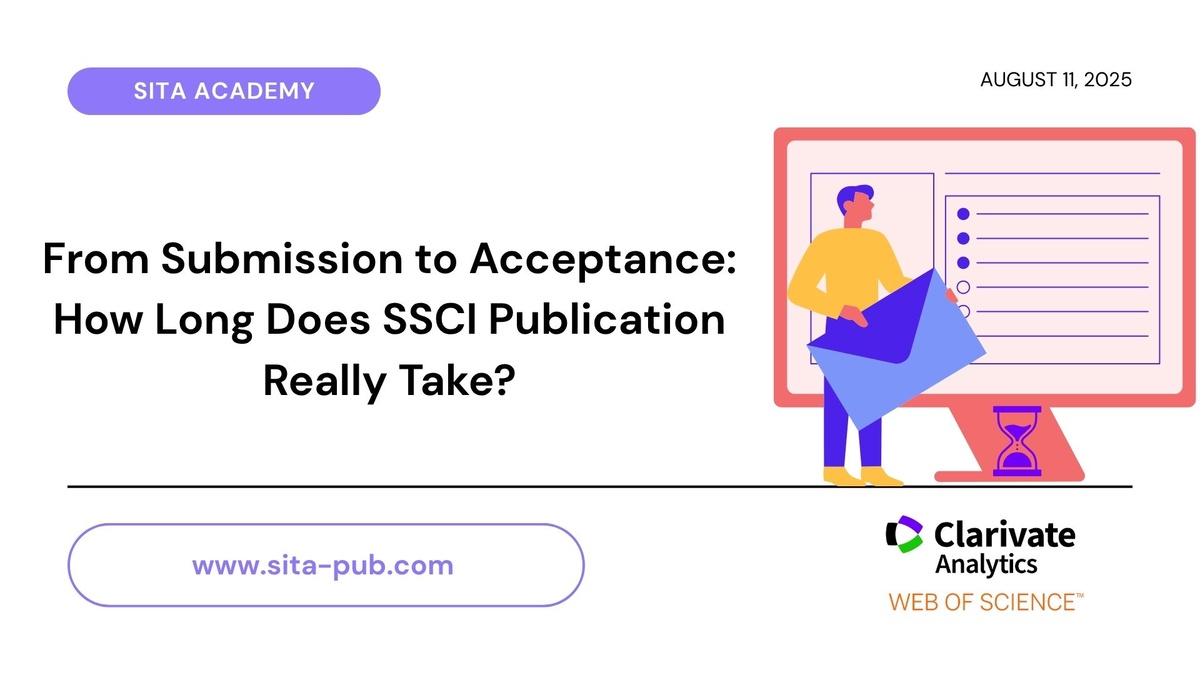
Some SSCI (Social Sciences Citation Index) journals can give you a decision in just 8 weeks. Others might take 6 months or more. What causes such a big difference? The answer lies in the way these journals handle formatting checks, peer review, and production.
The truth is, timelines vary significantly depending on the journal’s editorial workflow, your manuscript’s quality, and the complexity of the review process. In this guide, we’ll break down the entire SSCI publication journey — from formatting and submission to peer review, acceptance, and final publication — so you know exactly what to expect and how to plan your academic milestones with confidence.
1. What Are SSCI Journals?
The Social Sciences Citation Index (SSCI) is part of the Web of Science Core Collection, managed by Clarivate Analytics. SSCI journals are considered highly prestigious in the social sciences because:
They have undergone a rigorous selection process for quality and impact.
They are included in Journal Citation Reports (JCR), meaning they have Impact Factors.
They’re widely recognized by universities worldwide for promotion, graduation, and research grants.
Fields covered by SSCI journals include:
Education & Educational Research
Psychology
Sociology
Political Science
Economics
Communication
Management & Business
Anthropology
Public Administration

Because of their credibility, publishing in SSCI journals often requires strict adherence to formatting, originality, and research quality standards — which brings us to the first stage.
2. The Formatting Process: Setting the Foundation

Before you even submit, your paper must match the journal’s author guidelines exactly. This step often takes 1–3 weeks depending on your preparation.
Key formatting tasks:
Manuscript Structure
Title page
Abstract (150–250 words)
Keywords (5–7 carefully chosen for discoverability)
Introduction, Methodology, Results, Discussion, Conclusion
References in the required style (APA, Chicago, etc.)
Figures and Tables
High resolution
Correct numbering and captions
References
100% adherence to journal style
Use a reference manager like EndNote, Zotero, or Mendeley
Language Quality
For non-native English speakers, professional native-level editing is highly recommended.
Time required: 3–7 days for professional editing services.
Plagiarism Check
Most SSCI journals require an iThenticate report (or similar plagiarism checker).
Recommended similarity index: below 10–15%.
Time required: 1 day to check and revise.
Tip: Journals reject manuscripts outright if they don’t meet basic formatting and originality standards, so don’t rush this stage.
3. The Submission Process
Once your paper is ready, you’ll submit through the journal’s online submission system (e.g., ScholarOne, Editorial Manager).
Steps involved:
Create/Log in to the submission portal
Upload files:
Main manuscript
Figures/tables (sometimes separately)
Cover letter (personalized to the journal)
Declaration of originality
Conflict of interest statement

Suggest potential reviewers (optional in many journals)
Final check before submission
Average time for submission process: 1–3 days (mainly administrative).
Once submitted, your manuscript moves to the initial editorial check stage. This takes 1–2 weeks, during which the editor decides whether to send it for peer review or desk-reject it
4. The Peer Review Process
This is where the real waiting begins — and the duration varies greatly.
How it works:
Editor Screening
The Editor-in-Chief or Associate Editor ensures the paper fits the journal’s scope and meets quality requirements.
Timeline: 1–3 weeks.
Reviewer Invitation
Editors invite 2–4 expert reviewers in your field.
Timeline: 1–4 weeks (sometimes longer if reviewers decline).
Review Process
Reviewers evaluate your methodology, contribution to the field, novelty, and clarity.
Timeline: 6–12 weeks on average, but some journals take 4–6 months.
Why the variation?
Field complexity (e.g., large datasets or interdisciplinary topics may take longer to review)
Reviewer availability (holidays, workload)
Journal’s internal processes
Decision Stage
Major Revision — Usually means the paper is promising but requires significant changes.
Minor Revision — The paper is almost ready for acceptance.
Reject — The paper will not proceed further.
Tip: Respond to reviewer comments promptly and thoroughly. A quick, well-prepared revision can cut months off the process.
How to Politely Follow Up Without Annoying the Editor
It’s common for authors to feel anxious when their SSCI submission seems to be “stuck” in one stage for weeks or months. However, editors often handle dozens (sometimes hundreds) of manuscripts, so patience is essential — but that doesn’t mean you can’t check in.
Best Practices for Following Up:
1. Wait a reasonable time first – For most SSCI journals, it’s best to wait at least 8–10 weeks after submission or 4–6 weeks after sending a revision before sending your first follow-up.
2. Be polite and concise – Keep your email under 150 words. Clearly state your manuscript title, ID number, and the date of submission. Avoid sounding impatient or demanding.
3. Express understanding of their workload – Acknowledge that peer review takes time and that you appreciate their efforts.
4. Ask for an update, not a decision – You’re checking status, not pressuring for an outcome.
Example Follow-Up Email:
Subject: Inquiry Regarding Manuscript Status (ID: 2024-SSCI-1234)
Dear [Editor’s Name],
I hope this message finds you well. I am writing to kindly inquire about the current status of my manuscript titled “[Title],” submitted on [Date]. I completely understand the demands of the review process and appreciate the time and effort involved. I just wanted to confirm whether the paper is still under review and if there is any additional information I can provide to assist in the process.
Thank you very much for your attention and support.
Best regards,
[Your Name]

What Slows Down the SSCI Review Process
SSCI journals aim to process manuscripts efficiently, but several factors can slow things down — sometimes beyond the editor’s control. Knowing these factors helps you prepare and minimize delays.
1. Reviewer Availability
Reviewers are unpaid volunteers with busy schedules. In peak academic seasons (e.g., start of term, exam periods), invitations may take weeks to be accepted.
What you can do: Suggest suitable reviewers in your submission (if allowed) to help the editor find someone faster.
2. Poor Initial Formatting
If your paper doesn’t match the journal’s style or is missing essential declarations (e.g., conflict of interest, ethics approval), it may bounce between you and the editorial office before even reaching reviewers.
What you can do: Follow the author guidelines precisely, and consider professional formatting assistance.
3. Complex or Controversial Topics
Studies that involve highly specialized methods, sensitive topics, or interdisciplinary approaches may require more review rounds to ensure accuracy.
4. Delayed Author Revisions
If you take 2–3 months to respond to reviewer comments, it prolongs the total timeline significantly.
What you can do: Aim to submit revisions within 2–4 weeks unless more time is absolutely necessary.
5. Internal Backlogs
High-prestige SSCI journals receive more submissions than they can handle, leading to longer editorial and production queues.
5. Acceptance Timeline
The time from submission to final acceptance depends on:
Number of review rounds
Speed of your revisions
Journal efficiency
Typical SSCI timeline:
Fast track journals: 4–6 months
Average pace: 6–12 months
Slow pace: 12–18 months (especially for top-tier Q1 journals)
Example:
Submission → First decision: 8 weeks
Revision 1: 3 weeks
Second review: 4 weeks
Acceptance: After ~5–6 months total
6. Publication Timeline
Acceptance is not the end — now comes the production stage.
Stages after acceptance:
Proofs
Journal sends you formatted proofs for final checking.
Timeline: 1–2 weeks
Online First Publication
Your article appears online before being assigned to a specific issue.
Timeline: 2–4 weeks after proof approval.
Final Issue Assignment
Article is assigned to a print/online issue with page numbers.
Timeline: 1–6 months (varies widely).
Summary Timeline for SSCI Publication
Stage | Time Range |
Formatting & Editing | 1–3 weeks |
Submission Process | 1–3 days |
Initial Editorial Check | 1–2 weeks |
Reviewer Assignment | 1–4 weeks |
Peer Review | 6–24 weeks |
Revisions | 2–6 weeks |
Final Acceptance | Total 4–12 months |
Publication | 1–6 months after acceptance |
Final Tips to Speed Up SSCI Publication
Choose the right journal — Match your topic to its scope to avoid desk rejection.
Follow guidelines perfectly — Formatting errors can delay review.
Invest in editing — Clear, polished English speeds up the process.
Respond quickly to revisions — Every delay on your end adds to the total time.
Avoid predatory journals — Always verify SSCI indexing on Web of Science.
Publishing in SSCI journals is a long but rewarding process. While it may take anywhere from 4 months to over a year, planning ahead, submitting a well-prepared manuscript, and staying engaged during review can significantly reduce delays. Remember — quality and patience are the keys to turning your research into a published success.
Maximize Your Chances of Publication in SSCI Journals with SITA Academy
Publication in SSCI journals is never 100% guaranteed, but there are proven steps to significantly increase your chances of acceptance. At SITA Academy, we specialize in managing the entire publication process to give you the best possible outcome.
Our Services Include:
Journal Selection Assistance
We help you identify the most suitable journals aligned with your research scope and academic goals.Native English Editing
Enhance the clarity, coherence, and professionalism of your manuscript with expert editing by native speakers.Plagiarism Checking and Removal
Ensure your work is original and meets ethical standards by detecting and eliminating any plagiarism issues.Complete Submission Support
We prepare and submit your manuscript with all required materials, including cover letters, graphical abstracts, and extended abstracts.Submission Tracking
Receive detailed submission reports and login credentials to monitor your manuscript status.Continuous Follow-Up
We maintain active communication with the journal throughout the review process to keep you updated and address any queries promptly.
Send us your research scope, and we will provide you with a tailored list of journals for your consideration.
Process of Submitting an Order in SITA Academy

Share Your Research Scope |

Receive Journal List |

Select Your Journal |

Formatting & Submission |
Verified Contact Channels
If you have any questions, inquiries, or would like to learn more about our services, please don't hesitate to reach out to us. Our dedicated team is ready to assist you.







